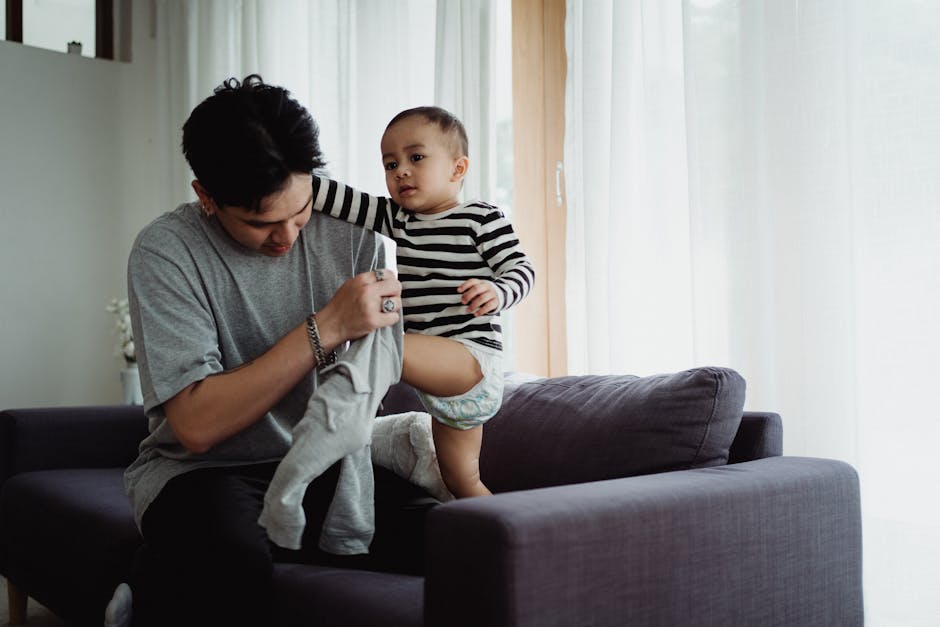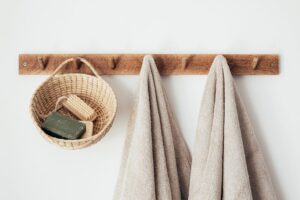Understanding the Need for Dressing Assistance
When providing care for elderly loved ones, one aspect often overlooked is the need for assistance with dressing. Many seniors struggle with this daily task because of physical limitations or other health conditions.
Having a helping hand from caregivers can make a significant difference in their daily routines. At Signal Health Group, we understand the importance of providing compassionate care tailored to individual needs, including dressing assistance. Our trained staff members are skilled in assisting with dressing tasks while respecting the dignity and independence of our clients.
By recognizing and addressing the need for dressing assistance, we can improve the quality of life for seniors and ensure they receive the support they require to thrive.
The need for dressing assistance is more common than many think. It’s for older adults or those recovering from surgery. Anyone with limited mobility, strength, or agility can benefit. Imagine trying to button a shirt with trembling hands or pulling up pants when bending is painful. That’s how dressing assistance steps in – it’s about maintaining dignity and independence. People often struggle in silence, not wanting to burden others. Recognizing when someone might need help is crucial. It’s about observing the difficulty in performing simple tasks, taking the time to dress, or avoiding certain clothes. Offering support subtly can make a significant difference in someone’s life. At its core, dressing assistance aims to empower individuals – it doesn’t do independence but enhances it.
Identifying When Someone Needs Help with Dressing
It’s always easy to tell when a loved one might need help to get dressed. But signs can point you in the right direction. If you see someone struggling to button shirts, getting frustrated with zippers, or skipping dressing because it’s tough, they may need assistance. Also, look for clothes being put on backward or inside out. These are clear indicators. It’s more than just clothes; it’s maintaining dignity and independence. Offering help subtly and respectfully is critical. Remember, it’s not about taking over but providing the proper support to keep them confident and self-sufficient. Signal Health Group is here to assist in ensuring your loved ones receive the care they need.
Essential Dressing Assistance Tools and Equipment
When fostering independence at home, especially for individuals facing mobility or strength challenges, having the right tools can make all the difference. Here are some essential dressing assistance tools and equipment that can help simplify the process:
- Button hooks: These handy tools make fastening buttons a breeze for anyone with limited hand dexterity.
- Zipper pulls: A simple yet effective tool, zipper pulls attach to small zipper tabs, making them easier to grasp and use.
- Sock aids: Slide your sock onto this tool, slip your foot in, and pull the handles to bring the sock up over your foot without bending over.
- Elastic shoelaces: Turn any shoe into a slip-on. They are no more struggling with tying shoelaces every day.
- Dressing sticks: These help pull up pants, take off socks, and guide shirts over arms and heads without the need to stretch or bend excessively.
- Long-handled shoe horns: A boon for those struggling to slip into shoes without crushing the back, these enable you to put on shoes while standing or sitting, no bending required.
Incorporating these tools into daily routines can significantly enhance dressing independence, restore a sense of self-reliance, and smooth mornings.
Techniques for Effective Dressing Assistance
When helping someone dress, being mindful of their comfort and dignity is critical. Start by choosing easy-to-wear clothes. Think wider openings, Velcro, or elastic waists. Here’s How to make dressing less of a chore and more empowering. Firstly, please encourage them to do as much as possible on their own; it boosts their confidence. For shirts and jackets, hold them open so they can slide their arms through. Trousers? Place them so they can step into them or assist in pulling them up if needed. Socks and shoes can be tricky. Opt for a slip-on or use a long-handled shoehorn. Finally, always talk through what you’re ensuring they are in every step. This approach provides physical and emotional support, fostering independence and respect. Signal Health Group sponsors this article.
Dressing Assistance for Different Types of Clothing
Getting dressed might seem simple, but for some, it’s a challenge that requires a helping hand. Different types of clothing present unique challenges. First, shirts and blouses. Look for options with Velcro or Snaps if buttons are tricky. It speeds up the process and lessens frustration. Pants and skirts can be tricky, too. Elastic waists are a game-changer, offering ease and comfort. Avoid zippers or ties if possible. Shoes should be looked at. Slip-on or those with Velcro straps are way easier than dealing with laces. Remember, the goal is independence and ease. Each clothing choice can make a big difference in someone’s daily life. Keep things simple and accessible.
Overcoming Common Challenges in Dressing Assistance
Getting dressed seems straightforward, right? Not always. For people with physical limitations or specific disabilities, it’s an issue they face daily. The goal? Please keep it simple and maintain dignity. Here’s Here’soop on tackling these challenges head-on. First, patience is vital you’re. Whether you need assistance or your loved one, take it slow. Rushing can lead to frustration for everyone involved. Next, choose the right clothes. Opt for garments with Velcro or snaps instead of buttons and zippers. These are easier to handle. And consider clothes that are easy to slip on and off, like those with elastic waistbands. Organization matters. Keep frequently worn items within easy reach. This cuts down the hassle and saves time. Lastly, use dressing aids. Tools like button hooks or zip pullers can be game changers. They make those fiddly tasks much more manageable. Remember, it’s about making dressing easy while fostering independence and respect.
This post is brought to you by Signal Health Group.
Tips for Promoting Independence in Dressing
Promoting independence in dressing is key to boosting confidence and self-reliance at home, especially for those with mobility issues or disabilities. Start by choosing clothes that are easy to put on and take off. Think elastic waistbands, velcro fasteners, and front-opening shirts. These can make a big difference. Encourage the use of dressing aids like zipper pulls, buttoning aids, and long-handled shoe horns. These tools are designed to simplify the process. Organize the wardrobe so the most commonly worn items are easily accessible. This reduces frustration and saves time. Practice dressing skills in a stress-free environment. Build these skills gradually, focusing on one area at a time. Celebrate successes, no matter how small. This boosts morale and encourages perseverance. Remember, patience and practice are key. With the right approach and tools, dressing can become an easier, more independent task.
How Technology Can Aid in Dressing Assistance
Technology has become a game changer in supporting individuals to dress independently at home. It’s all about empowering people, especially those with mobility issues, to take charge of their day. Let’s talk about a few ways tech is making this happen. First up, adaptive clothing. This isn’t unusual fashion talk; it’s a bit of clothes designed with Velcro closures, magnetic buttons, and elastic waists, making them easier to wear and remove. Next, we have dressing aids like zipper pullers and button hooks, which are simple yet effective tools for tackling tricky fastenings. Then there’s cutting-edge stuff – robotic devices. Picture a gadget that can assist in pulling up pants or a robot arm that helps put on a shirt. Also, don’t use apps and virtual closets, which can help you plan outfits and suggest clothing based on weather or personal preferences, reducing cognitive load and decision fatigue. Pretty cool, right? Each of these technologies opens up a world where dressing can be less of a chore and more of an empowered choice, reinforcing independence for many.
Creating a Safe and Supportive Environment for Dressing
Creating a safe and supportive environment is critical to helping someone dress independently at home. First, ensure the room is clutter-free to reduce the risk of falls. Next, think about the layout. Is the dresser easy to reach? Can they sit comfortably while dressing? Consider installing grab bars or a sturdy chair for balance. Lighting is crucial, too. A well-lit room helps in selecting clothes and spotting obstacles. Opt for items with Velcro or elastic Velcro, which are easier to handle than buttons and zippers. Lastly, maintain patience and encourage their efforts. This boosts confidence, making the dressing process smoother and fostering independence.
Empowering Individuals through Skilled Dressing Assistance
Empowering someone through skilled dressing assistance is more than just helping them put on a shirt or pants. It’s boosting their confidence and independence, significantly impacting their day. Picture this: when someone can dress themselves, they start the day on a high note, feeling capable and ready. Dressing assistance, when done right, teaches folks the tricks and strategies to dress themselves despite challenges like limited mobility or dexterity. It involves understanding what clothing works best for easy dressing – think Velcro instead of crotons or elastic waistbands that slide up easily. But it’s not about the right clothes. It’s all about the techniques: laying clothes in order and using dressing aids like long-handled shoehorns or grabbers for socks. The goal? To make dressing less of a struggle and more of a success. This support doesn’t help someone look good; it’s about a bit of dignity, independence, and daily joy. Through skilled dressing assistance, individuals regain a piece of their autonomy, one outfit at a time.
Signal Health Group sponsors this blog post.






